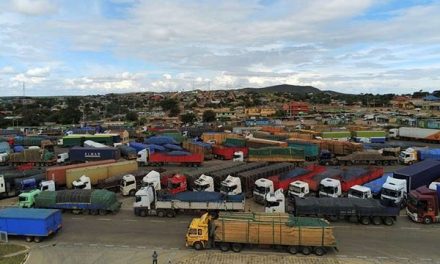
Best route for SADC – regional integration or regional cooperation?

By Kizito Sikuka
When leaders and representatives of nine then independent countries in southern Africa came together in 1980 to forge a closer alliance, their motivation was that a stronger coalition among themselves would allow them to easily and fully achieve sustainable development.
However, since the establishment of the Southern Africa Development Coordination Conference (SADCC) in April 1980 and its transformation into the Southern African Development Community (SADC) in August 1992, the region has realized mixed results.
In fact, the limited benefits that SADC member states have gained from working together is a puzzle that needs to be unpacked and analysed.
Former President of the United Republic of Tanzania, Jakaya Kikwete once said in a SADC Public Lecture on Upscaling Regional Economic Integration and Development held in August 2016 ahead of the 36th SADC Summit in the Kingdom of Eswatini that for southern Africa to fully benefit from working together there is need to focus more on regional integration rather than regional cooperation.
Although the two concepts — regional integration and regional cooperation — are closely linked, cooperation mainly refers to where countries agree to cooperate in certain things like transnational crime, agriculture, education, health and infrastructure. With integration the countries agree to weave or tie their economies together.
“In essence what we have been doing has been more on the regional cooperation side than on integration,” Kikwete said, adding that “we now have to take on the path of regional integration in earnest.”
“It is not easy because there will be sacrifices to be made, some will even affect our sovereignty. But we have no choice but make the sacrifice for ultimately, the benefits are bigger. That is why even the stronger and developed economies are busy pursuing integration arrangements.”
True to his assertion, not all SADC commitments and protocols have been ratified to advance the regional laws from being stated intentions to actual application, since some countries are not ready to give away their sovereignty.
This slow implementation of strategic documents and protocols by SADC member states has resulted in most citizens failing to fully realize benefits of belonging to a share community in southern Africa.
For example, more than 33 protocols have been signed by member states ranging from trade and investment, peace and security, to transboundary natural resources and the empowerment of women and young people to push forward its sustainable development agenda.
However, not all the protocols have been ratified to advance regional integration from “stated intention to actual application.”
At least two-thirds of the member states are required to ratify a protocol for it to enter into force.
The process of approval of a regional legal instrument requires, first, signing, and then ratification – a process that differs from country to country, with some requiring approval of parliament.
After ratification, there is need to domesticate the legal instruments before they can have force of the law and are implemented by various member states.
As such, domestication is a further step in the harmonisation of regional protocols to align them with local legislation.
In this regard, it is critical for the 38th SADC Summit which opens 17-18 August in Windhoek, Namibia to ensure member states show a strong political will to intensify efforts to domesticate and implement various regional commitments to ensure sustainable development.
Furthermore, SADC member states should be willing to give up some of their sovereignty to ensure that any decision made at the regional level is applicable and implemented at the member states level.
Such a situation would require the SADC Secretariat to strengthen its coordinating and enforcement role for the effective implementation of regional programmes.
Headed by an Executive Secretary, the Secretariat is the principal executive institution of SADC, responsible for strategic planning, facilitation and coordination and management of all SADC programmes.
However, its responsibility is not fully executed as Member States are reluctant to cede their sovereignty.
The 38th Summit of SADC Heads of State and Government is being held under the theme “Promoting Infrastructure Development and Youth Empowerment for Sustainable Development.”
The theme builds on the focus of the past four SADC Summits that sought to advance industrial development, and takes into account the need for adequate infrastructure to support industrialisation and the need to engage the youth, who are the bulk of the SADC population.
In fact, this is the first time in the history of SADC that a similar theme has ran for so many years.
At the summit, Namibian President Hage Geingob assumes the SADC chair from his South African counterpart Cyril Ramaphosa. sardc.net












































